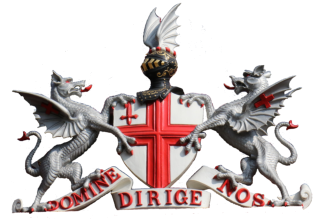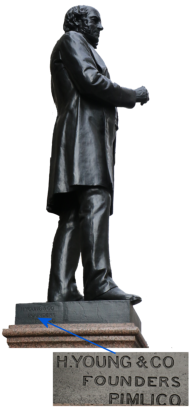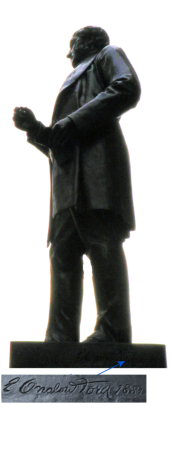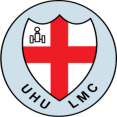
Miglia Quadrato
The Miglia Quadrato was a motoring event. It took the form of a treasure hunt which took entrants to various parts of
the City of London, where they were challenged to find the answers to questions. These clues were not cryptic but
might be observationally challenging. For some the event was a social activity and led entrants on a historical and
educational tour (combined with a "quiz") of some of the less visible “features” of the City. For others, it was highly
competitive: an attempt to answer as many clues as possible in a limited time. The event took place at night, for five
hours between midnight and five in the morning (Saturday/Sunday). There was absolutely no route. Competitors were
provided with a sheet having sixty references that might be plotted on a 1:10000 map pin-pointing a “search”
area of 10 metres square. There were no cryptic clues – each question may be answered from permanent
features of the City. For example, Blue Plaques, architect stones, inscriptions on monuments, etc.
The sheet was handed to competitors at midnight and they would spend twenty minutes or more plotting
these on the map. They then decided their own path between locations. The clues are categorised as
easy, medium, or difficult and this would affect how each team chose their order of tackling the clues.
The event took place entirely on the streets, footpaths, and public spaces of the City of London. The
organisers took every care to avoid inhabited areas and sensitive areas (such as the hospital) and to ensure
residents and other users of the City were not disturbed or affected. Only publicly accessible areas were
used.
It is noteworthy that the event was originally created in 1957/1958 in the wake of the Suez crisis and fuel
rationing. This had brought all motor competition to a halt and the Miglia was conceived as a way to enable a
form of motoring event while minimising fuel usage. Indeed, the mileage is such that even a Lamborghini
would be unlikely to use a gallon of petrol! The format of the event is unique and has earned a
reputation for providing a challenging and enjoyable night, so much so that teams travelled from all
over the United Kingdom (and even further afield) to compete. The reputation of the event
was spread by word of mouth – our regular competitors were notable for their
enthusiasm. The nature of the City meant the numbers involved must be limited and
ideally the event would see an entry of around a hundred teams. The family car was
ideally suited to the event as no benefit accrues from performance. Of
particular satisfaction was the entry of a few vintage or veteran vehicles (such
as those from the Royal College of Science/Royal School of Mines). These certainly
symbolised the spirit of the event. Recently, more such entries have boosted the
numbers resulting in much admiration at the start.
It is worth quoting the Motor Sports Association definition of a Treasure Hunt: An event involving the
solving of certain problems in which the use of a car is merely incidental as a means of transport and the
skill or experience of a driver plays no part. The skill element of the event was in map reading and
accurately identifying the clue locations at which answers may be found – easy ones will be obvious to all,
but the difficult ones may escape those who do not peruse the area with sufficient care! Selection of clues
took into account traffic and parking regulations/restrictions and the safety of contestants was
paramount. Indeed, the key to success was in accurate plotting. Some of the clues (notably those
classified as difficult) would tax the crews’ observational skills. But the clues are straightforward,
there are no catches. Many simply require completion of quoted text or finding an inscribed date
(or similar). There is no ambiguity – when an answer has been found it will be obvious that it is the
required one. Local knowledge has little bearing – indeed, some who felt they knew the City fared no better than other
novices. Of course, selection of a route and navigation between the chosen points was a challenge (especially given
one way streets, turn prohibitions, etc.) but was part of the event that both frustrated and give it its unique character.
Running at night, there is the fun of searching by torchlight. The beam of a torch may linger on an inscription or pass
close by. There is a thrill at finding an answer, especially so if other teams are nearby and you are able to slip away
without revealing what you found! Clues range from the blatantly obvious, such as blue plaques (you still need to have
plotted carefully) to sometimes obscured and faded foundation stones. Statues may bear a discreet name of the
sculptor or founder, often tucked away in some nook or cranny. The time can flash by and then you are headed to the
finish, where after a short wait, provisional results will show how you fared against others. There are rivalries between
teams from the same club or company that are equal to the battle at the head of the field. For those of a braver
disposition there was a category for teams of just two (not recommended for your first outing). Should you wish to
learn more about the techniques of plotting and clue finding please download our Newcomers’ Guide here. A farewell
to this event can be found elsewhere on the site.
Our other annual event (the Londinium Pedo) has run since
1972. Neither could have continued without the
approval of both the City authorities and the City of
London Police – to both of whom, we are most
grateful. The present organisers have been running
both events since 1971 and this continuity
ensures there is no impact upon other City users.
We
enjoy a very good relationship with the City
of London Police who have offered advice
over the years.
We have run this event for over fifty years
and are proud that the Police have
always
considered it a well-
organised event.
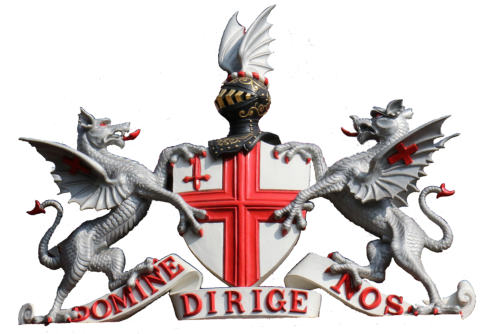
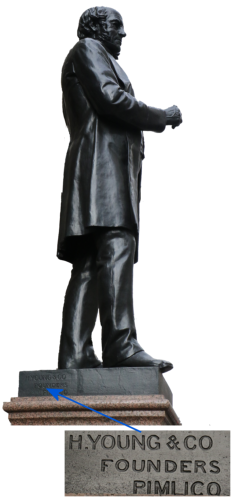
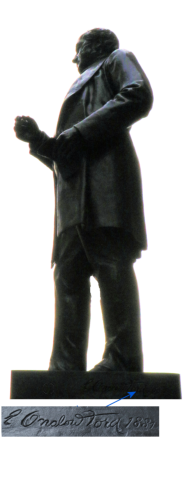


- Home
- Miglia Quadrato - description
- Miglia Quadrato - nutshell
- Miglia Quadrato - farewell
- Miglia Quadrato - questions
- Miglia Quadrato - questions and answers
- Miglia Quadrato - recollections
- Miglia Quadrato - roll of honour
- Miglia Quadrato - roll of honour 2 crew
- Londinium Pedo - description
- Londinium Pedo - nutshell
- Londinium Pedo - next event
- Londinium Pedo - questions and answers
- Londinium Pedo - recollections
- Londinium Pedo - roll of honour
- History
- History - race meetings
- History - speed trials
- History - rallies
- Contacts
- Privacy

Miglia Quadrato
The Miglia Quadrato was a motoring event. It took
the form of a treasure hunt which took entrants to
various parts of the City of London, where they
were challenged to find the answers to questions.
These clues were not cryptic but might be
observationally challenging. For some the event
was a social activity and led entrants on a
historical and educational tour (combined with a
"quiz") of some of the less visible “features” of
the City. For others, it was highly competitive: an
attempt to answer as many clues as possible in a
limited time. The event took place at night, for
five hours between midnight and five in the
morning (Saturday/Sunday). There was absolutely
no route. Competitors were provided with a sheet
having sixty references that might be plotted on a
1:10000 map pin-pointing a “search” area of 10
metres square. There were no cryptic clues – each
question may be answered from permanent
features of the City. For example, Blue
Plaques, architect stones, inscriptions on
monuments, etc.
The sheet was handed to competitors
at midnight and they would spend twenty
minutes or more plotting these on the
map. They then decided their own path
between locations. The clues are
categorised as easy, medium, or difficult
and this would affect how each team chose
their order of tackling the clues.
The event took place entirely on the
streets, footpaths, and public
spaces of the City of London. The
organisers took every
care to avoid
inhabited areas and sensitive areas
(such as the hospital) and to ensure
residents and other users of the
City were not disturbed or
affected. Only publicly accessible
areas were used.
It is noteworthy that the event was
originally created in 1957/1958 in the
wake of the Suez crisis and fuel
rationing. This had brought all motor
competition to a halt and the
Miglia was conceived as a way to
enable a form of motoring event
while minimising fuel usage.
Indeed, the mileage is such that even a
Lamborghini would be unlikely to use a gallon of
petrol! The format of the event is unique and has
earned a reputation for providing a challenging
and enjoyable night, so much so that teams
travelled from all over the United Kingdom (and
even further afield) to compete. The reputation of
the event was spread by word of mouth – our
regular competitors were notable for their
enthusiasm. The nature of the City meant the
numbers involved must be limited and ideally the
event would see an entry of around a hundred
teams. The family car was ideally suited to the
event as no benefit accrues from performance. Of
particular satisfaction was the entry of a few
vintage or veteran vehicles (such as those from
the Royal College of Science/Royal School of
Mines). These certainly symbolised the spirit of
the event. Recently, more such entries have
boosted the numbers resulting in much admiration
at the start.
It is worth quoting the Motor Sports Association
definition of a Treasure Hunt: An event involving
the solving of certain problems in which the use
of a car is merely incidental as a means of
transport and the skill or experience of a driver
plays no part. The skill element of the event was
in map reading and accurately identifying the clue
locations at which answers may be found – easy
ones will be obvious to all, but the difficult ones
may escape those who do not peruse the area
with sufficient care! Selection of clues took into
account traffic and parking
regulations/restrictions and the safety of
contestants was paramount. Indeed, the key to
success was in accurate plotting. Some of the
clues (notably those classified as difficult) would
tax the crews’ observational skills. But the clues
are straightforward, there are no catches. Many
simply require completion of quoted text or
finding an inscribed date (or similar). There is no
ambiguity – when an answer has been found it will
be obvious that it is the required one. Local
knowledge has little bearing – indeed, some who
felt they knew the City fared no better than other
novices. Of course, selection of a route and
navigation between the chosen points was a
challenge (especially given one way streets, turn
prohibitions, etc.) but was part of the event that
both frustrated and give it its unique character.
Running at night, there is the fun of searching by
torchlight. The beam of a torch may linger on an
inscription or pass close by. There is a thrill at
finding an answer, especially so if other teams are
nearby and you are able to slip away without
revealing what you found! Clues range from the
blatantly obvious, such as blue plaques (you still
need to have plotted carefully) to sometimes
obscured and faded foundation stones. Statues
may bear a discreet name of the sculptor or
founder, often tucked away in some nook or
cranny. The time can flash by and then you are
headed to the finish, where after a short wait,
provisional results will show how you fared
against others. There are rivalries between teams
from the same club or company that are equal to
the battle at the head of the field. For those of a
braver disposition there was a category for teams
of just two (not recommended for your first
outing). Should you wish to learn more about the
techniques of plotting and clue finding please
download our Newcomers’ Guide here. A farewell
to this event can be found elsewhere on the site.
Our other annual event (the Londinium Pedo) has
run since 1972. Neither could have continued
without the approval of both the City authorities
and the City of London Police – to both of whom,
we are most grateful. The present organisers have
been running both events since 1971 and this
continuity ensures there is no impact upon other
City users. We enjoy a very good relationship with
the City of London Police who have offered advice
over the years. We have run this event for over
fifty years and are
proud that the Police
have always
considered it a
well-
organised
event.
